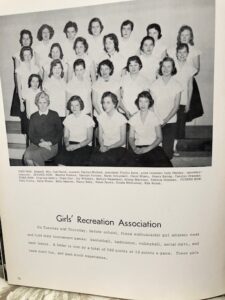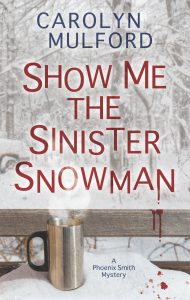Over more than 30 years, I wrote and rewrote The Feedsack Dress, my first published novel. For the record, here are my recollections of why I began writing it and why I persisted in finishing it and finding editors smart enough to buy it.
I grew up on a small farm near Kirksville, Missouri, in the 1940s and 1950s. With cows to milk morning and evening, we stuck close to home, but on Sunday afternoons my father sometimes drove us around on the gravel roads to see how the crops and livestock were faring on other farms.
My world expanded mightily in 1962 when I joined the Peace Corps. I served as an English teacher for two years in Ethiopia and then traveled (on $5 a day, for the most part) through the Middle East and Europe on a slow trip back to the States.
After working on a magazine in Washington, D.C., for two years, I thirsted for foreign places. An editorial job at a U.N. organization headquartered in Vienna, Austria, enabled me to live (and travel) for three years in Europe. I spent a six months going home through the Middle East, Asia, and Australia.
I returned to the family farm to regroup in 1971. When my parents and I followed country roads to look at familiar places, I saw that my childhood world had changed considerably. Most of the one-room schools and churches had disappeared or been repurposed, leaving no place for neighbors to gather. Several once well-kept farmhouses had broken windows and weedy yards. Chickens no longer ran free near occupied houses. Teams of horses, even retirees, had given way to large tractors and unfamiliar equipment.
The traditional small farm where the family raised much of its food and named most of its animals was being consumed by agricultural enterprises, an accelerating trend that depressed my parents.
Recalling the swift changes following World War II, I reflected that my generation was the last to grow up on a small diversified farm. The transformation from labor-intensive to mechanized farming and from a rural to an urban society had both benefited and disrupted lives.
I kept coming back to these thoughts for a couple of years, reading social histories to supplement my memories and knowledge of the postwar period. Personally and nationally, we’d experienced a great transition, and I wanted to write about it. But in what form? I didn’t have the academic credentials to write a social history or the inclination to write a memoir, and postwar rural northeast Missouri wasn’t a marketable topic for magazine articles.
I’d always wanted to write fiction, and a children’s novel seemed the right choice for the story that my memories and research were germinating. Historical events and economic developments that affected my community and the nation led me to set the story in 1949. For example, the Rural Electrification Act’s lines finally reached us (increasing the number of cows we could milk, decreasing time spent on housework, and enabling us to read and study at night). We bought our first brand-new car (a symbol of growing prosperity).
4-H had come to our community, and mothers joined us in learning to make clothes from such new synthetics as rayon and acetate as well as from cotton feedsacks, a staple for clothing and tea towels during the Depression and the war.
The colorful patterned sacks became my symbol of individual and societal transition—and of being different. By now I’d observed that being unlike the majority—in economic class, skin color, language, religion, whatever—posed a problem wherever you are in the world. Dealing with being outside the norm challenges anyone at any age, but it’s particularly painful for teenagers discovering their own identity. So I forced my heroine to endure being the only girl wearing a feedsack dress as she goes from a one-room country school to ninth grade in town.
The book is set when my older sister went through that culture shock, and the plot is not autobiographical. That doesn’t mean elements aren’t real. The mean girl’s nasty remark about the riffraff on the square on Saturday nights actually came from a favorite teacher, who apologized profusely when I pointed out my family was part of that crowd. I certainly grew frustrated with facing new games in gym class just as I’d learned to play the last one.
I drew on memories in describing mule races and killing chickens. Most events came from my imagination. I don’t remember whether my class elected officers. That plot element derived from the Nixon campaign’s dirty tricks.
Just as Gail, the protagonist, is not me, the other characters are not relatives or classmates. At Class of 1957 reunions, they’ve guessed whom my characters were based on, often naming teachers I never had. I created most by adapting bits of people I’d known during and after high school.
This was my first novel, a major learning experience. I began writing with a setting, a few characters, and little idea of what to do with either. The characters’ personalities and relationships emerged quickly, but the plot had little direction until I realized I needed a major conflict. The first draft that I submitted to agents ended right after the class election. An agent told me I couldn’t end the book on a down note, and I expanded the plot.
The revision still didn’t appeal to New York editors. I put the manuscript aside for years at a time but always came back to it. Each time I reread it, I liked it too much to give up on revising it and finding a publisher.
Thirty years from the time I started writing, I was working with a critique group of mystery writers. Although they were Eastern city slickers, they agreed to give me feedback on The Feedsack Dress. Their ignorance of farming and the mid-century Midwest guided me in clarifying terms and describing things common to me but not to later generations and urbanites.
In a national writers’ newsletter, I read that Cave Hollow Press, a small publisher in Missouri, welcomed submissions set there. The editors bought my manuscript, did a light edit, and published it in July 2007. At the end of 2023, the publisher had six copies left in stock.
In 2009, the Missouri Center for the Book chose The Feedsack Dress as the state’s Great Read at the National Book Festival on the Mall in Washington, D.C. The warm reception that readers gave The Feedsack Dress encouraged me to continue my transition from nonfiction to fiction.
Few print copies of this novel remain available, but you can buy the e-book at https://www.barnesandnoble.com/w/the-feedsack-dress-carolyn-mulford/1103622141?ean=2940012128485.


